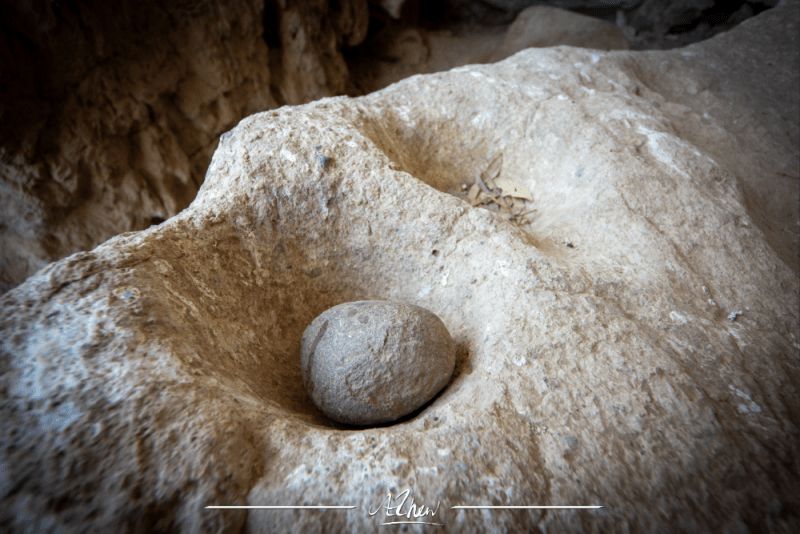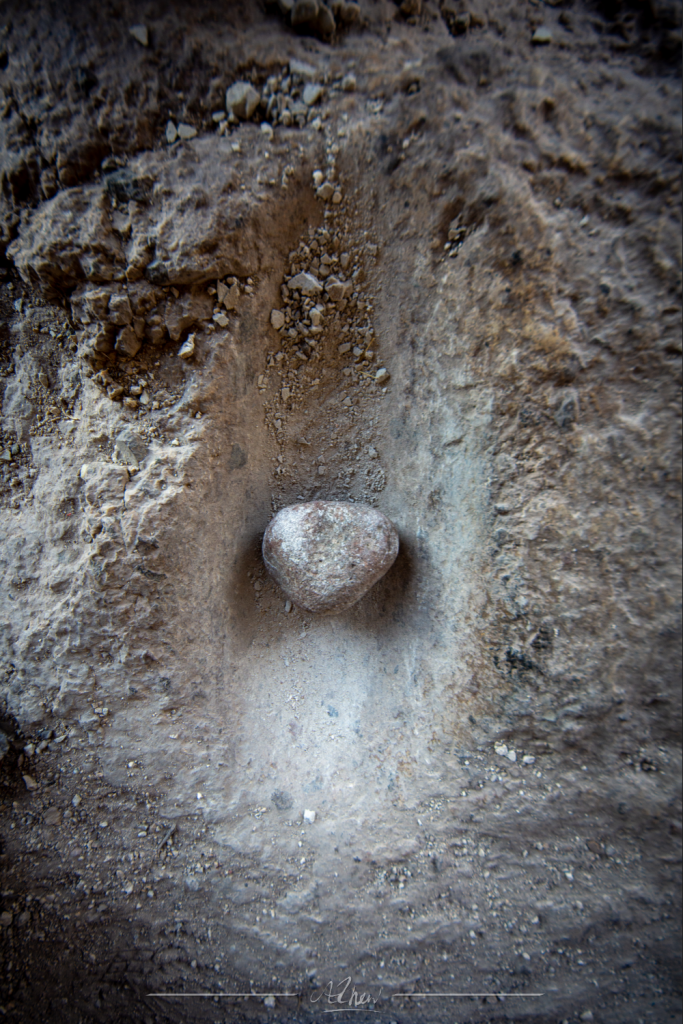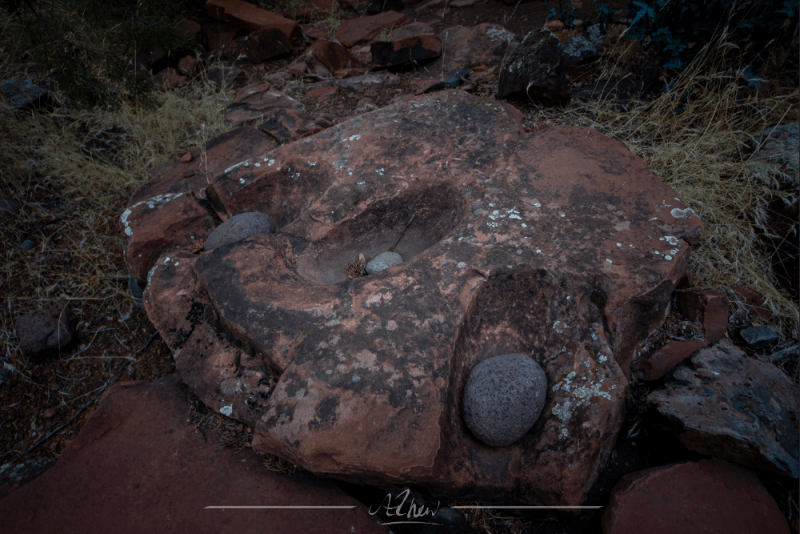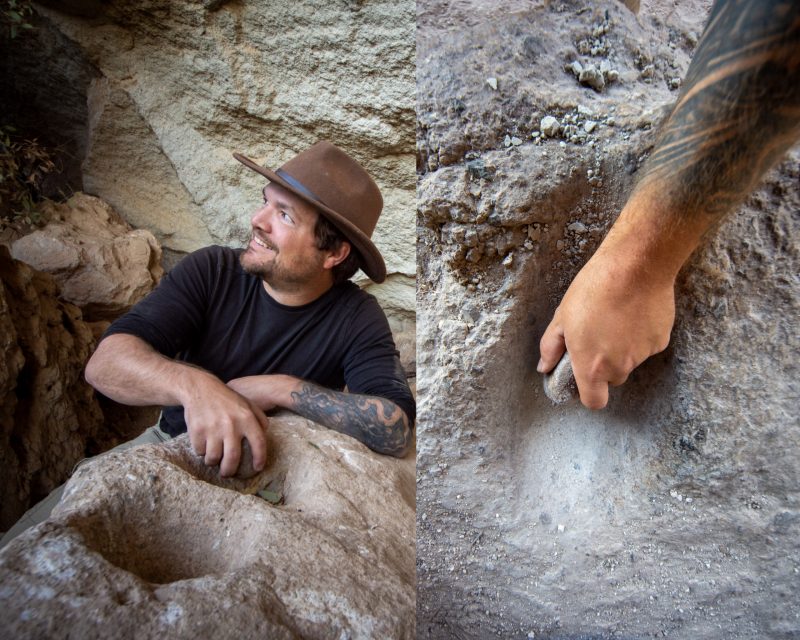Here we have 2 different artifacts with similar appearances and functions. Can you tell the difference?
I briefly touched on the Metate and its use before, but I will retouch on it in this post.

Similarities:
Like the Metate, Mortars are food-prep tools made of stone with an inner-basin used to process different plant material using a separate companion stone tool. I find them both most often in bedrock, but they can be found independently in medium to very large stones.
The tool used with the Metate is known as a Mano, while the Mortar would utilize a Pestle or Maul. Each would be fashioned for their respective companion tools through repeated use.

Differences:
Food preparation begins with the Mortar and ends with the Metate. A key difference between them is the pattern of movement. Mortars are deep and therefore used for longer vertical motions. Metates are comparatively shallow and are made for horizontal movements. These different motions make them good for different things—vertical being good for crushing, horizontal for grinding. It is possible for a Metate to become a Mortar over a very long time with generations of wear.
Dried mesquite, acacia, palo verde beans, even dried corn—anything too strong for grinding would first be crushed, then ground into flour to make a type of flatbread, or made into porridge.
Unfortunately for the recipients of this ancient form of food preparation, sand and little bits of stone would also end up in their food. This (and other factors) would contribute to severe tooth decay, and their teeth would erode, most often completely by their 30s.

*Thank you, to my friend and co-adventurer, Peter Stiles, for once again contributing his invaluable insight.

